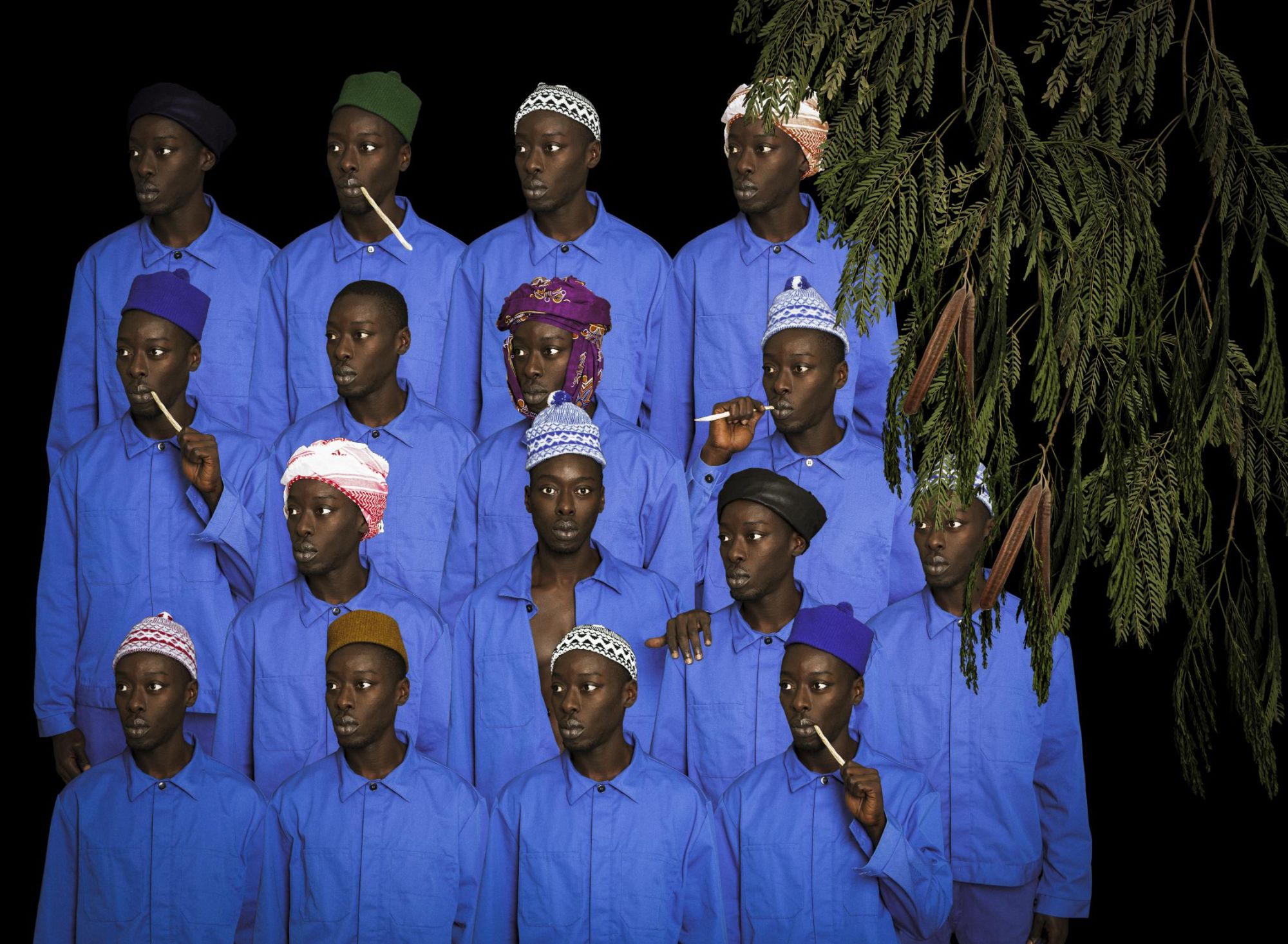Editor’s Note: This article was published in partnership with Artsy, the global platform for discovering and collecting art. The original article can be seen here.
In two separate images by the Dakar, Senegal-based photographer Omar Victor Diop, two Black figures – a man and a woman – lie curled against a dark expanse, one surrounded by a splash of technicolored Skittles, the other against ocher stalks of rice.
One is Diop, playing the role of young Trayvon Martin, who was shot and killed in Sanford, Florida, by George Zimmerman in 2012, and whose death catalyzed the Black Lives Matter movement. The other, played by Diop’s friend Dija, is Aline Sitoe Diatta, a Sengalese hero of colonial resistance who led a boycott against the French government’s seizure of rice harvests during World War II and died in prison for her efforts.
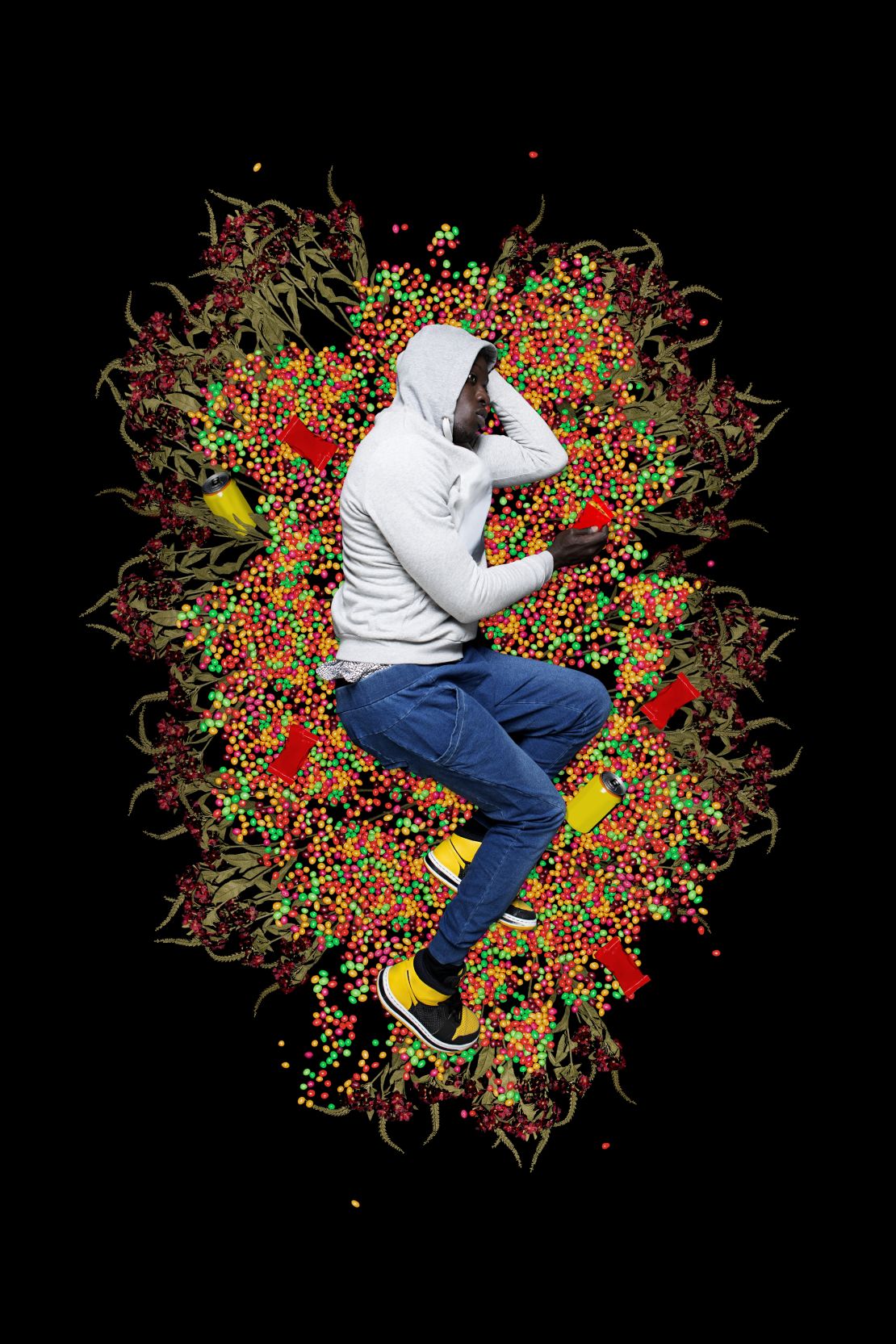
Placed together, the two mirror each other, though they are separated by nearly seven decades and an ocean. “Both Trayvon and Aline were very young when they were killed, and I really wanted to show the vulnerability of youth,” Diop said. “No matter how much potential, no matter how much righteousness and ambition and hunger for life [they] had, they died all alone.”
The two portraits are part of the series “Liberty” (2016), which chronicles events linked to Black protests across eras and countries through the lens of allegory. Through the images – in which he and Dija play the entire cast of characters, slipping into different identities with each photograph – Diop hopes to connect moments and movements of Black resistance from Africa to its diaspora to a larger history and sense of identity.
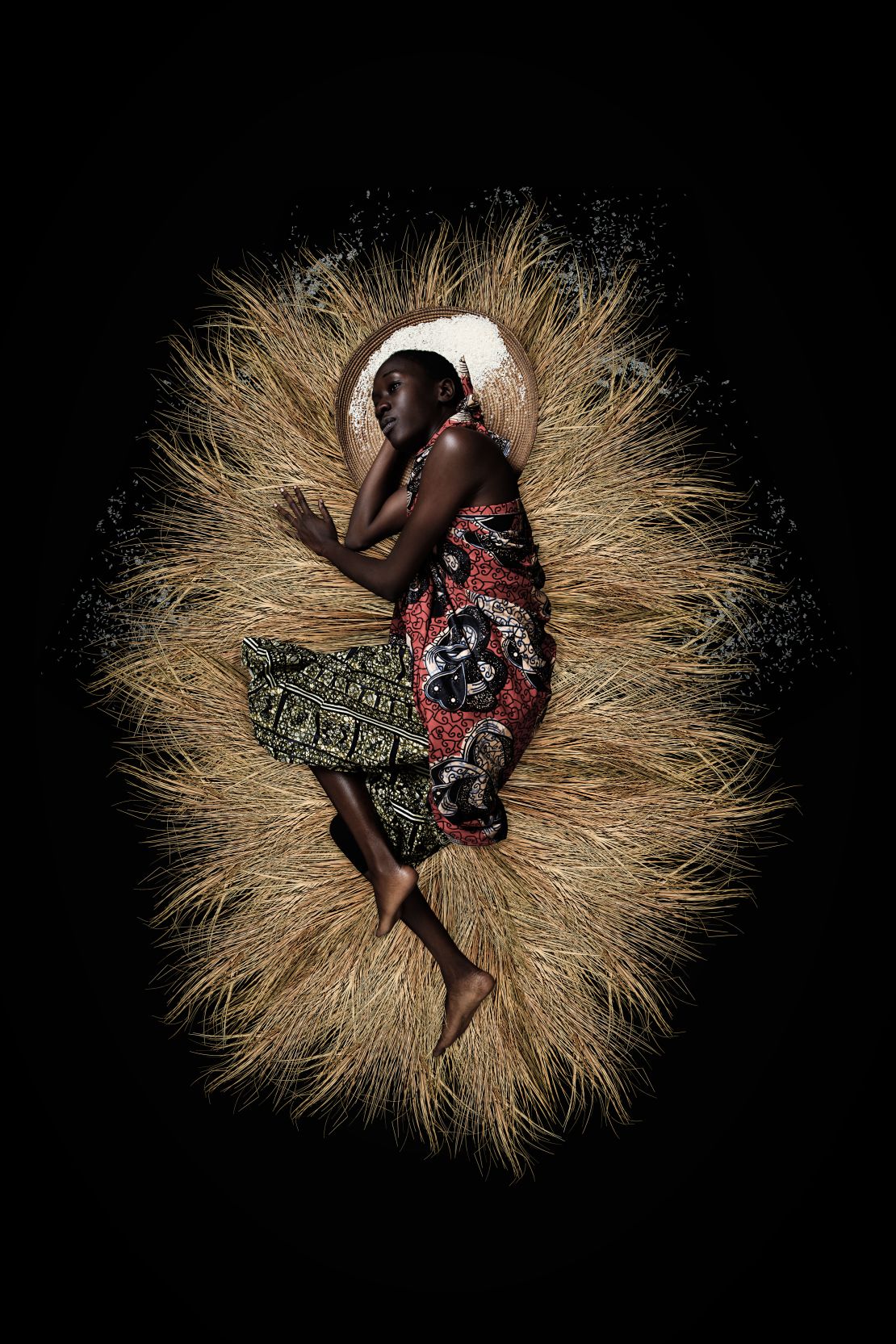
“The art I produce is an attempt to build another bridge between these [groups of] people that are actually one people – that were separated by history and slavery and the colonial era,” Diop said.
Black Americans, for example, rarely have a full picture of their lineage, with slavery dividing families, changing names, and making record-keeping impossible. “When an African American looks back at their history, actually, they [often can’t] go further than Juneteenth,” Diop explained. “[Their] history is far less traceable past that date.”
“Liberty” is part of a larger body of work that includes his earlier series “Diaspora,” shot in 2014, which saw Diop play the roles of important Black figures in European history in the style of Baroque portraiture mixed with the colorful textiles of their homelands.
Where “Diaspora” is vivid and regal, “Liberty” is pared down and somber. Diop and his female counterpart emerge from dark backgrounds, as one figure or many doppelgängers in dreamlike scenarios. But while the scenes occupy the realm of the uncanny, they are rooted in our very real histories and how we remember them.
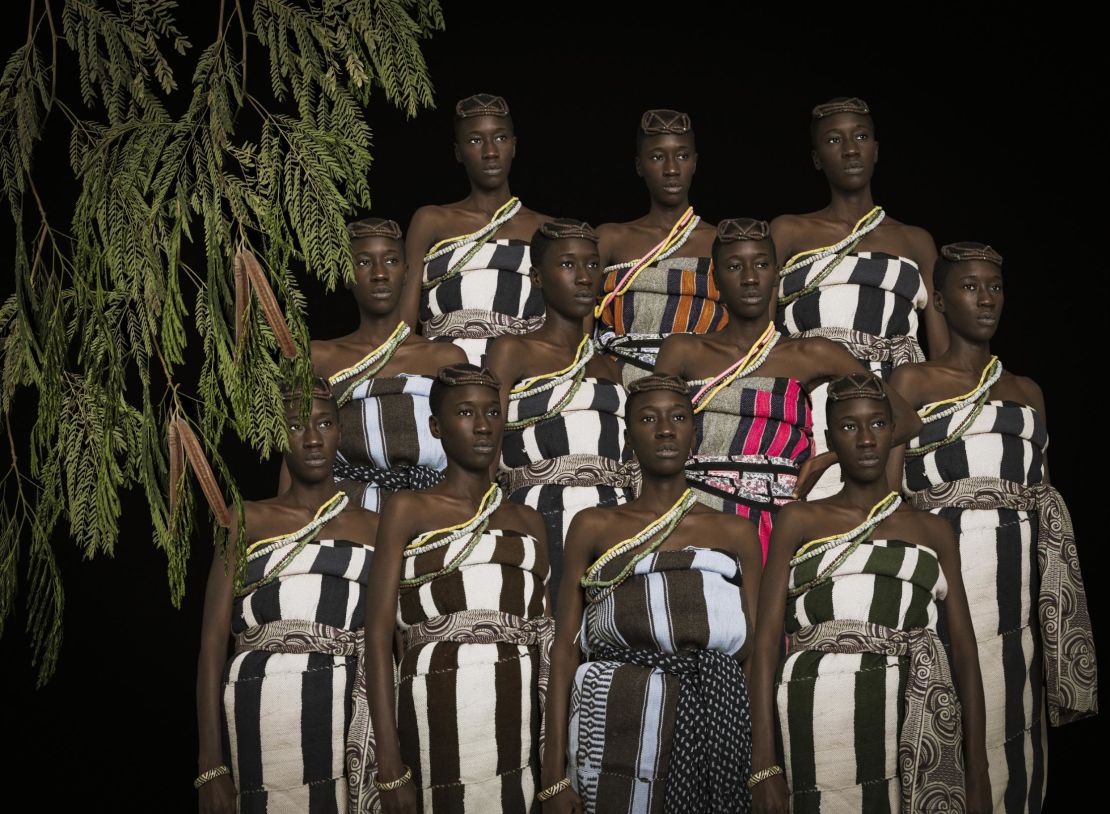
“It’s an allegory of memory and how memory is selective,” Diop described. “I see our memory as a Black space where things that we want to remember pop out every now and then.”
With only one figure maintaining eye contact in each image, the gaze is selective but penetrating. “I want the viewer to feel like [they] are being interrogated by a past that they have forgotten,” Diop said.
Diop, who was born in Dakar in 1980, is a self-taught photographer who first had a career in finance. In 2010, he submitted his work to the jury of the Biennale of African Photography and was surprised to be selected. With that exhibition, press and more opportunities followed, including gallery representation from Magnin-A in Paris.
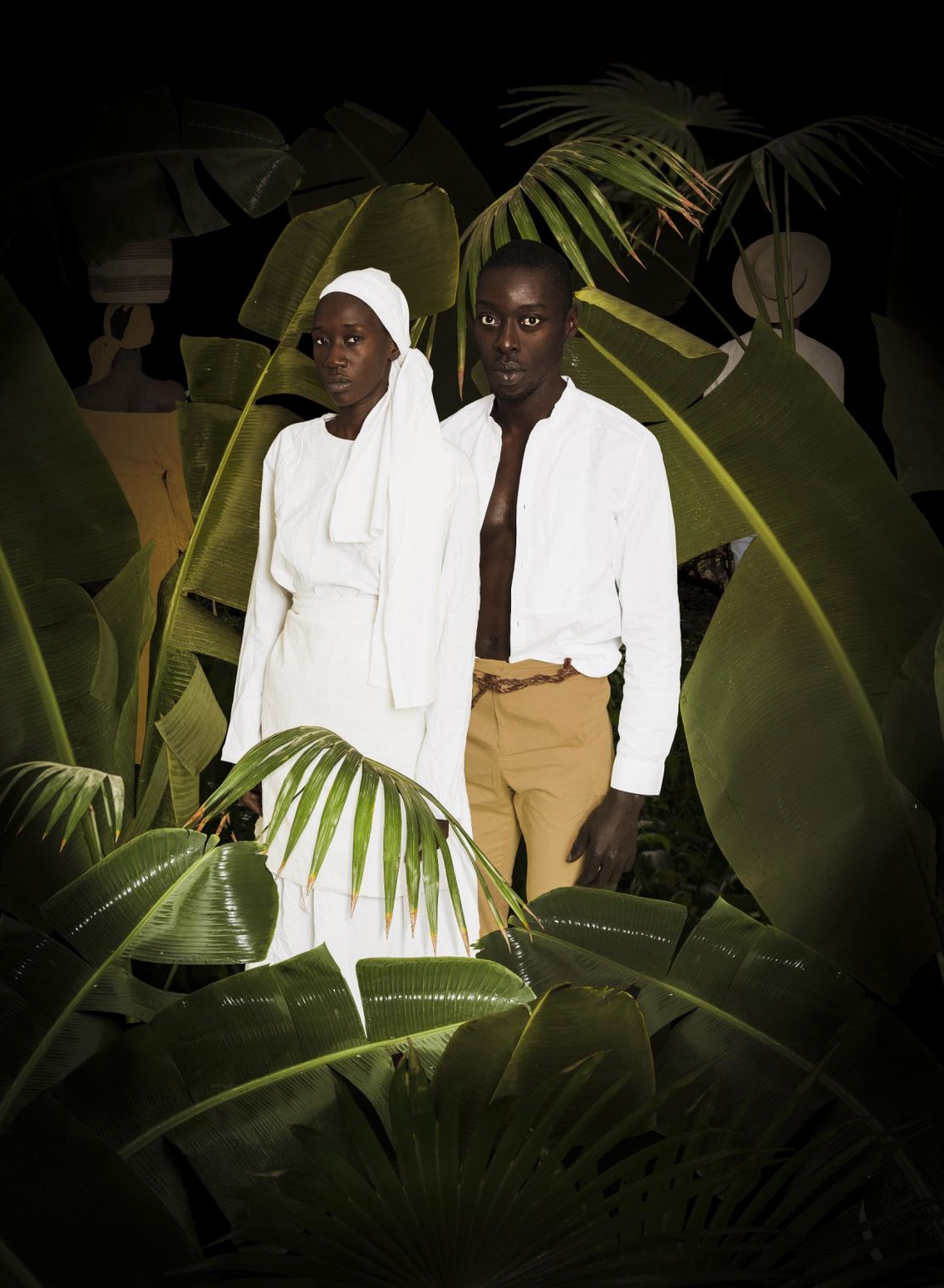
After producing the self-portraits for “Diaspora,” he turned the camera on himself again for “Liberty,” but he didn’t want to step into all of the roles for fear it would become too performative. Dija volunteered, and Diop said she became his “alter ego.”
“It was the best thing that could have happened to this project because even though we’re not related, we do have a resemblance—we really look like brother and sister,” he said.
Sometimes together, sometimes apart, they take on the identities of powerful but sometimes nameless figures in Black history: railway workers in French West Africa who went on strike in the 1940s; the Igbo women who revolted in British Nigeria in 1929. In one dual portrait, they assume the role of Nanny and Quao, a brother and sister who founded Nanny Town in Jamaica, a refuge for escaped slaves. In another, Diop dons an apron bearing the logo “The Free Breakfast for Children Program” – an early social program by the Black Panthers – under the group’s signature leather jacket.
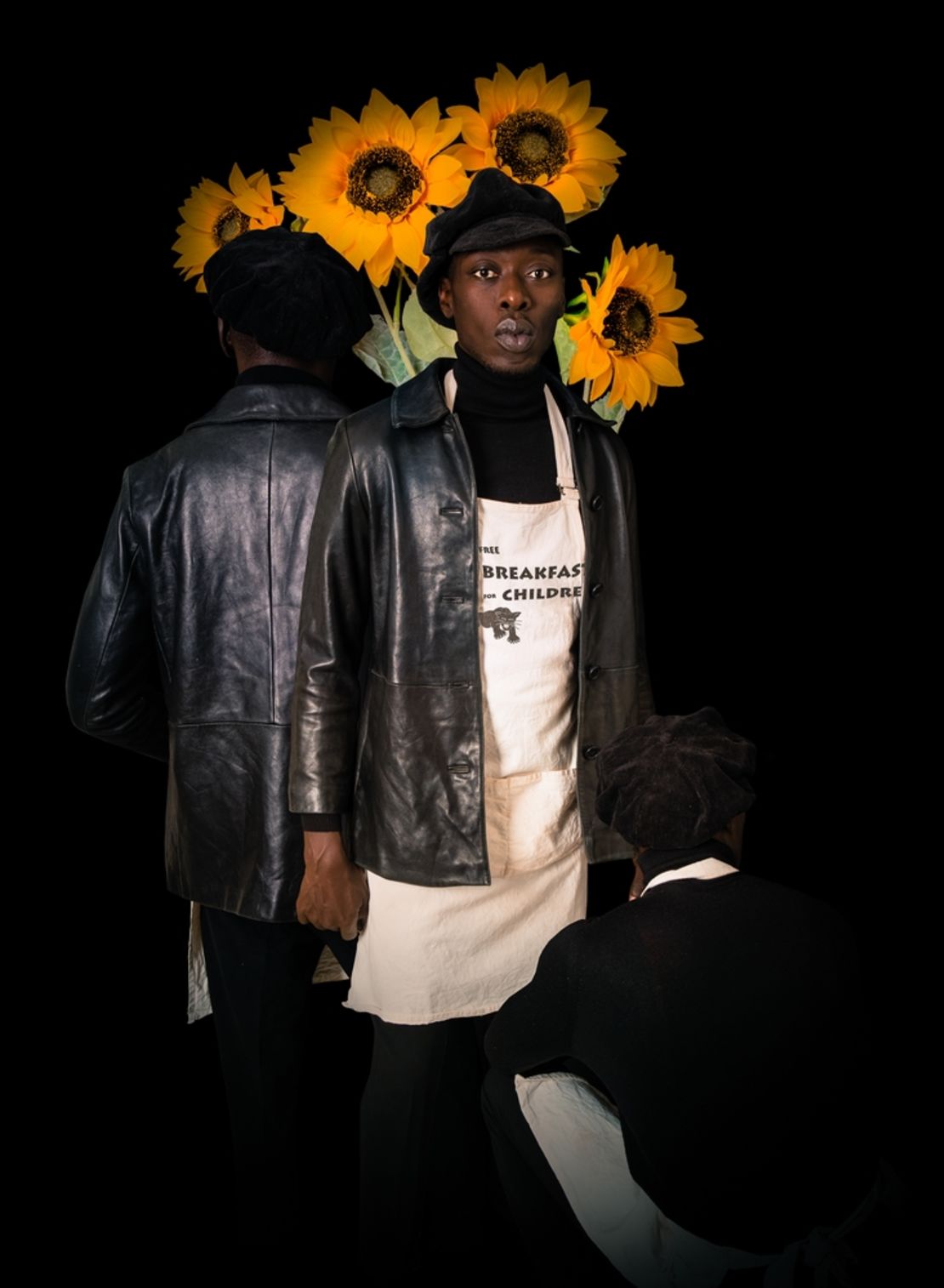
Since Diop has moved onto other projects following “Liberty,” the current wave of protests that have surged across the world following the killing of George Floyd in Minneapolis will not be addressed in the series. Its inclusion of Trayvon Martin, however, does pay powerful homage to the beginnings of Black Lives Matter, allowing us to reflect on how the movement has since grown to embody the kind of global connectivity Diop sought to encapsulate in the series.
“It’s not just a Black movement anymore,” he said. “And I think that’s what the objective was: We can’t fight this alone and we shouldn’t have to fight this alone. When you look at Black people from all over the world, we’re always involved in everyone’s fight. Look at how many Africans died in World War II. Look at the Vietnam War. This is the first time that I have the feeling that we’re not alone in this struggle, and it really feels good.” He paused: “And I hope it’s going to stay this way.”
